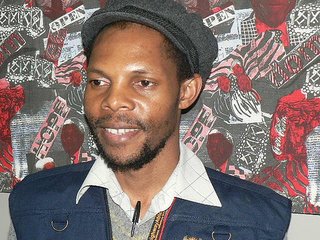
By Tula Dlamini
It has taken me a much longer time than I thought it would to figure out how to write this column. The question became whether I should introduce the article with a quote on aviation, a phoney conversation about the ups and downs of hot-air ballooning, or even relaying the fact that setting out from Johannesburg as a reporter covering the Delmas Hot-Air Balloon Challenge landed me an internship as Martyn Evers's ground crew, chasing the floating wonder-balloon and later retrieving it by car.
There were a total of nine air balloons and according to Martyn "flying conditions don't get any better". After a pilot briefing at 5.30am, there was consensus that a "hare and hounds" task would be flown.
This is an international balloon competition task that involves a hot-air-balloon taking off from a launch point and flying away for a predetermined time or distance and then landing. A marker point, often in the form of a cross, is laid out at this landing point.
The other balloons, the "hounds", will launch and attempt to follow or chase the "hare". The winning hound is the balloon that is able to drop a marker as close as possible to the hare's cross. There may be a condition requiring the balloons to fly for a minimum period of time, say 30 minutes, before the hounds are allowed to drop their markers.
Flip Steyn, a commercial hot-air-balloon operator, took off and proceeded to shake off the chasing hounds. After some 30 minutes and about 3,5km of flying, the hare went to ground and the hounds closed in.
The excellent steerage saw the hounds bobbing up and down as they made their final course corrections and closed in for the "kill". The hare had no chance as the pilots threw their markers on top of the cross.
Ballooning permits the balloonist to soar high in the sky and drift over the picturesque terrain. But much more than that, it can also be a truly efficient way of travel for the unhurried and curious of today.
The advantage of ballooning now is a more durable canvas balloon material, new lighting materials and the propane banner that makes the source of heat easily controllable.
top.
My initial concern was the possibility of the balloon leaving the Earth's atmosphere. But this could never happen since the hot-air balloon's flight depends on the density of the air outside.
Word is out that the Delmas area may become more of a choice for pilots. "Lots of open spaces, many landing opportunities and a lack of power and telephone lines," says Martyn.
The current "buzz" about hot-air-ballooning concerns the importance of involving local communities in future events. Lentswe Mokgatle, the executive mayor of Mogale City, says his city will not be left behind in this social transformation process.
According to available data, there are about 40 registered pilots in South Africa and only one pilot is black.
The Mogale City Mayoral Foundation is currently consulting its trustees in a bid to facilitate broader participation in the sport. A similar initiative was mooted in Bethlehem but was stalled by the tragic murder of its pioneer, Arthur Westworth.
Westworth was instrumental in setting up the Bethlehem Balloon Trust in August 2004. The objective of this legal entity was to accrue sufficient funds with which to purchase the necessary equipment to introduce the sport of hot-air ballooning to the community of Bethlehem.
Ballooning could be used to stimulate interest in aviation among young people. Arthur's vision must not die with him.

No comments:
Post a Comment